Into every garden, some weed seeds must fall. It’s just a fact of nature. Even if you use preventative weed control methods like mulching, you’ll have at least some weeds to deal with. Depending on your gardening style, you might have a lot.
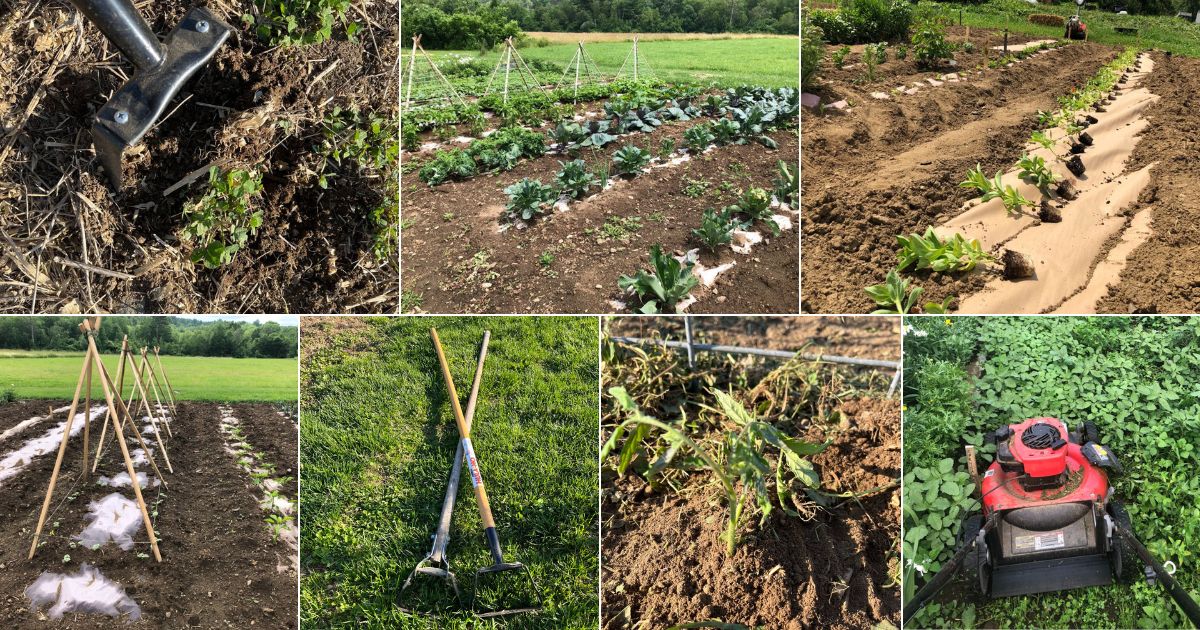
We know that mulch and weed barriers like paper and landscape fabrics can prevent weeds, but there are other things you can do besides mulching to make weeding easier, faster, and more effective.
Here are our top tips to make your weeding life better:
Jump to:
- 1. Start with transplants instead of seeds.
- 2. Plant densely.
- 3. Get to know common weeds for your area.
- 4. Pull after a rainstorm or watering.
- 5. Employ mulching and weedless gardening techniques.
- 6. Get the root.
- 7. Cut what you can’t pull.
- 8. Get weeds before they go to seed!
- 9. Invest in a few favorite tools.
- 10. Keep hoes and weeding tools clean and sharp.
- 11. Make it a habit.
- 12. Weed small.
- 13. Minimize soil disruption.
- 14. Put cover crops to work for you.
- 15. Get rid of pulled weeds.
- 16. Maintain mowable living aisles.
- 17. Use weed killers with care.
- Weeding – A Part of Garden Life
1. Start with transplants instead of seeds.

Not all seeds can or should be started indoors. Some seeds should always be direct sown in the ground, but for those that can be started and then transplanted, it is a good idea to do it — weeding-wise, we mean.
Why? Because it is a lot easier to spot and preserve transplants when you are weeding. They are much easier to see. Transplants will also be a lot bigger than newly-sprouted weeds, which will give them the jump on resources, helping your plants dominate over the weeds.
Many plants and weeds look an awful lot alike in the earlier stages, too, so it makes it much easier to tell your desirable plants apart from weeds. And as you’ll see in other tips here, the sooner you can tell your plants from your weeds, and the sooner you can deal with those weeds, the better.
2. Plant densely.
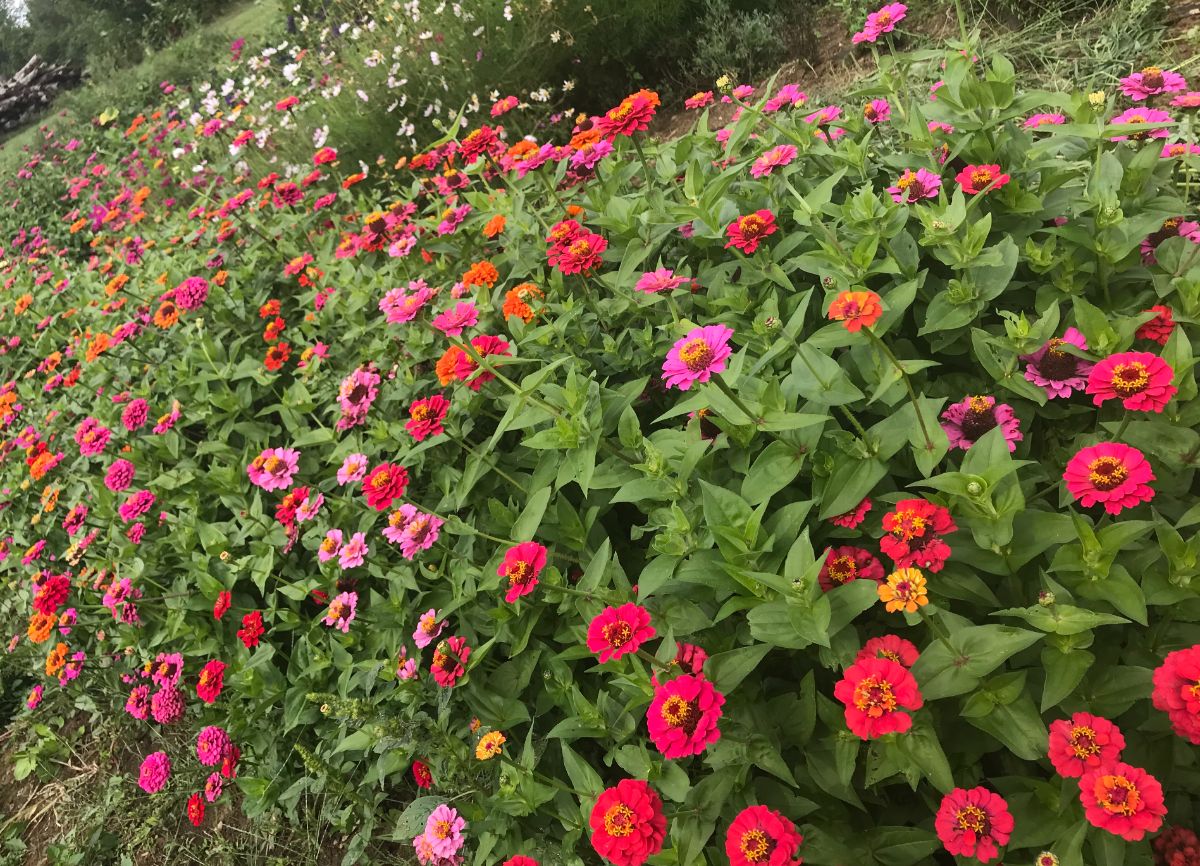
Two plants can't share the same space. Larger plants shade out weeds. So the more space you can cover with plants you do want, the better. This doesn’t necessarily guarantee you won’t have to weed, but it should reduce the number of weeds and weaken those that do germinate, making them less of a problem and easier to deal with.
Plant at least according to the recommendations on your seed or plant label, but consider reducing the spacing a bit to deny space and light for weeds. Even if you’re not planting a square-foot garden, the spacing recommended for square-foot gardens might give you an idea of how closely planted different flowers and vegetables can be.
3. Get to know common weeds for your area.
The better you know the weeds that are most common in your area, the easier they will be to recognize (the same holds true for the good plants in your yard and garden). This will make it easier for you to spot and pull weeds and not leave them there until they get larger, more established, harder to pull, and more likely to spread. Simply put, if you know your weeds, you won’t have to take a wait-and-see approach while they get bigger and steal your garden resources.
Knowing common weeds will also help you to learn their life cycle so you know how best to control them and also when they are likely to go to seed and start spreading.
4. Pull after a rainstorm or watering.

It is much easier to pull weeds out of the moist, soft ground than it is to try to wrench them free from the dry, hard ground. Try to time weeding for a day or so after a rainstorm. If you don’t have rain in the forecast, water the garden and then weed later that day or the next day. If you can do this on a day when you have a stretch of dry, hot weather ahead, that’s even better because the weeds that you pull or hoe are less likely to be able to reroot.
The trick is to weed when the soil is wet and loose but not muddy and clumping. That’s why it’s better to let the rain soak in for a while and wait a day or so to do your weeding—while the soil is still moist but after the surface water has had a chance to sink in.
5. Employ mulching and weedless gardening techniques.
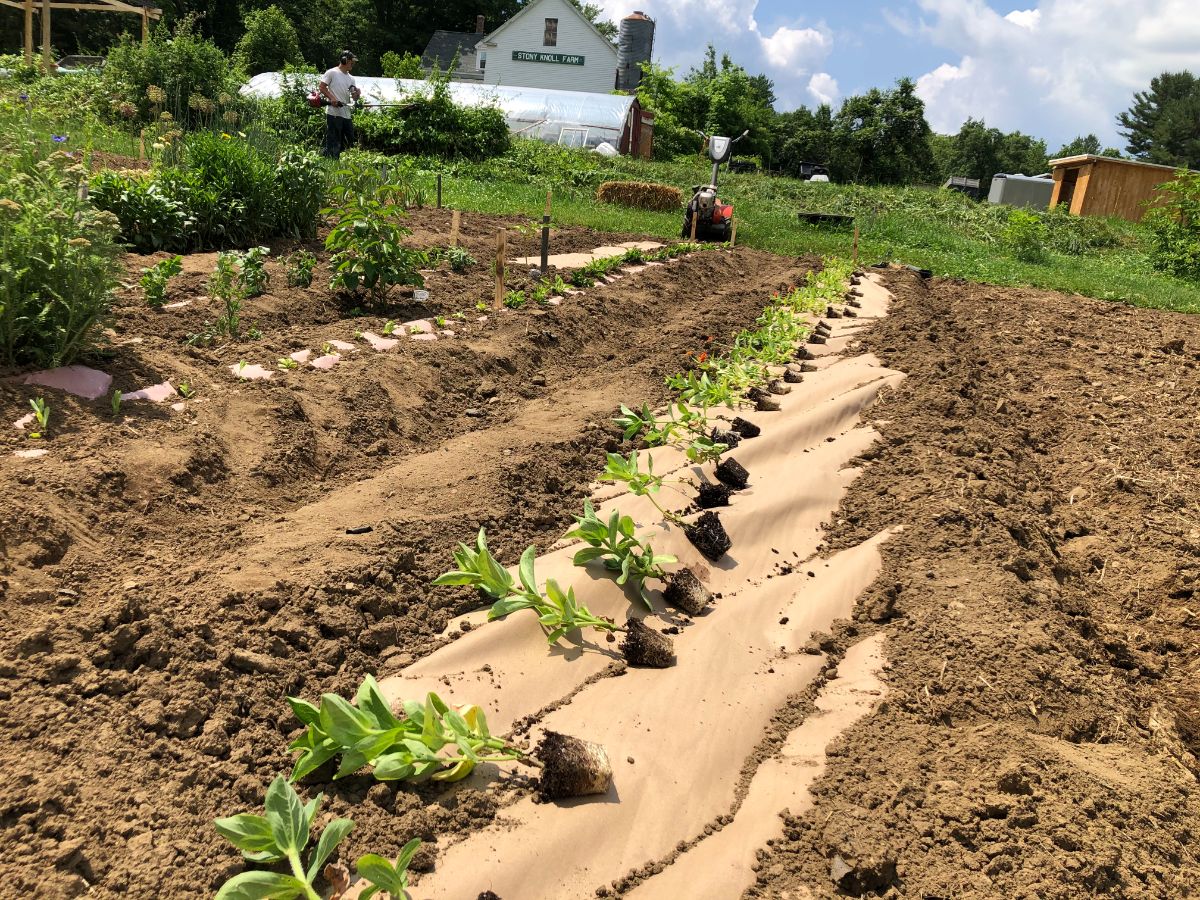
Mulching really is a good way to control weeds and seriously reduce your weeding chores, so we’d be remiss not to mention it. For the best and highest level of control, you’ll be best off with a barrier under the mulch or a thick layer of mulch to stop any seeds in the soil from becoming plants. Some good organic up-cycled, cheap options include newspaper (three or four sheets thick) and cardboard.
There are other “weedless” gardening techniques, too, that you might want to familiarize yourself with to stop weeds before they start.
6. Get the root.
The only surefire way to kill a weed is to root it out completely. Do your best to pull out, not break off, all of the weed. Grab at the base and pull straight up. Remove the entire plant.
7. Cut what you can’t pull.
If a weed gets ahead of you or you are concerned that it will compromise your plants if you pull it, cut it off close to the base. It will probably shoot up leaves again, but after a few times of doing this, if you continue to deny the weed of its leaves for photosynthesis, it will die. At the very least, cut below the flowering and seed-producing part of the plant.
8. Get weeds before they go to seed!
Weather, harvesting, preserving, life, obligations, engagements, vacations...we’re all busy, and sometimes you just can’t keep up with the weeds. Sometimes they grow bigger than we’d ever intended them to get. It’s okay. It happens. But do try your hardest to get the weeds out before they go to seed—or at least mow or cut the seed-bearing heads (before the seeds are viable). Some weeds can cast hundreds or thousands of seeds from a single plant. Denying them their ability to go to seed and their ability to reproduce is a serious investment in your future bank of time!
9. Invest in a few favorite tools.
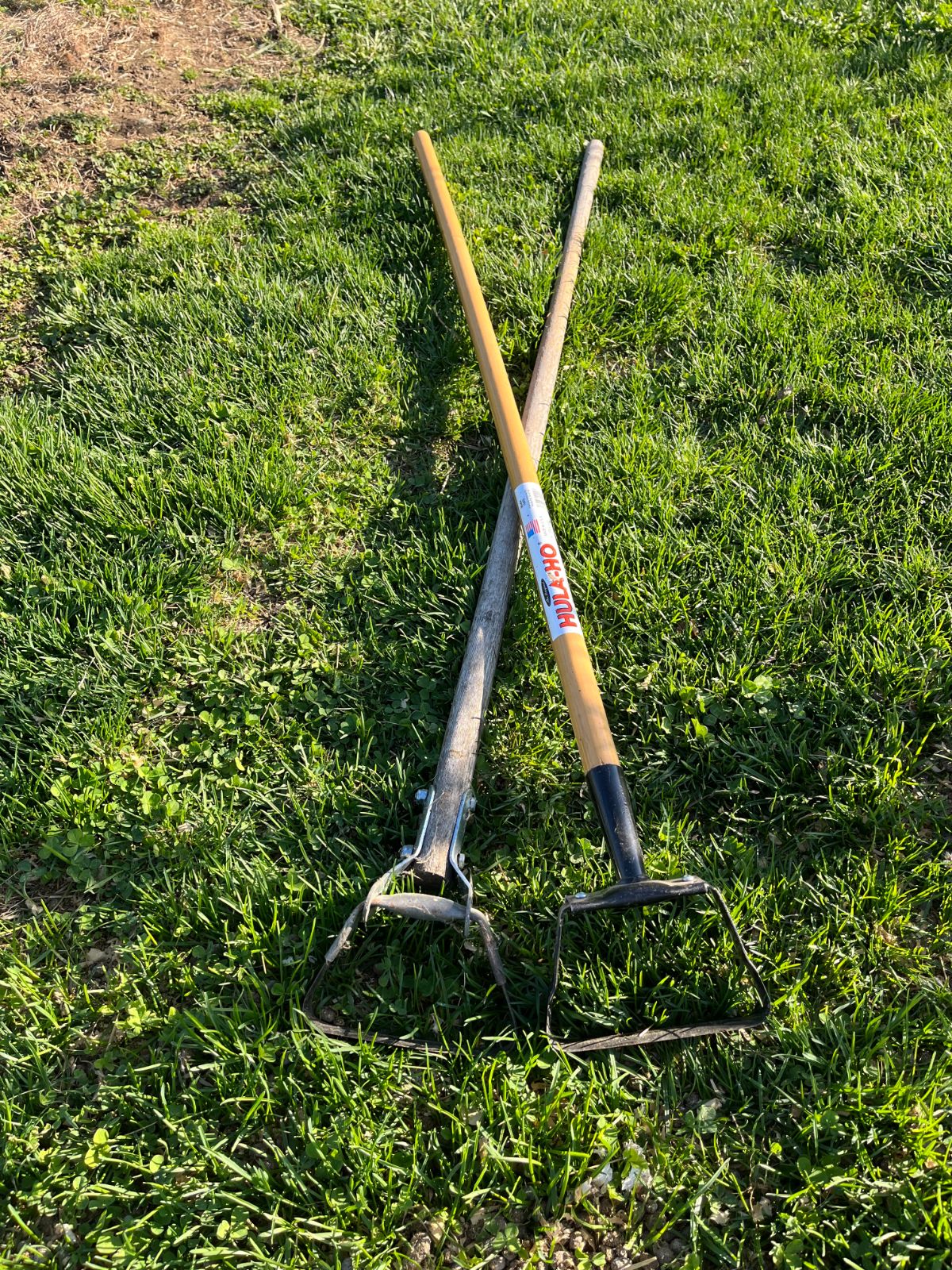
Investing in a few good quality weeding tools will make your life a lot easier. Having the right tools to suit your garden, preferences, and physical limitations will ease the work of weeding as it speeds it along.
There are several good options for weeding tools. Choose what you think will work best for you. Some popular choices are leverage-action puller styles, hand-held claw cutter types, and triangular shuffle or stirrup-style tools (these are available in both handheld and full size. For upright weeding that reduces bending and helps save your back, a good weeding hoe is what you need.
10. Keep hoes and weeding tools clean and sharp.
If you keep your tools in good working order, the way they are intended to be kept, they will continue to do their best work for you. A clean, sharp, honed tool is much easier to use and much faster, too.
One way to do this is to keep a bucket of oiled sand that you push garden tools into when not in use. Be sure to properly clean and store your garden tools at the end of the season, too, and they will last for years.
11. Make it a habit.
If you make regular weeding a part of your daily or at least weekly routine, you’ll keep ahead of the weeds, and you’ll decrease the number of weeds with each weeding. You will have fewer and fewer weeds each time you weed, and eventually, you’ll have a longer span of time before you need to weed again. The difference in the number of weeds will become noticeable each time you go out. And, although you can’t stop all the weed seeds from finding your garden, the more you control them this year, the fewer weeds and seeds that will be around for the next season, too.
12. Weed small.

Dealing with weeds when they are small, preferably at the thread stage or slightly older, is much faster and easier. You may need to hand-pull some weeds, but you can take care of most of them with a quick sweep of the hoe. This is fast and easy to do with a weeding tool or shuffle hoe.
Go out once or twice a week or break the chore up into a row or two each day and hoe or cultivate the row. This will also be less disruptive to your garden plants, and you won’t accidentally uproot garden plants by pulling large weeds with large, deep roots.
13. Minimize soil disruption.
Cultivating with deep-tilling equipment can increase the number of weeds in your garden. There is always weed seed buried down in the ground. Many types of seed can stay viable for a long time—years—and then sprout when they are exposed to the right growing conditions.
Most weed seeds need exposure to light and the elements to sprout. They may lie dormant in deep soil but start to grow when they are turned to the top. Weeding methods like rototilling or cultivating can bring seed to the top, where they have the right conditions to grow. Weed seeds usually need to be in the top two inches of soil to germinate and breakthrough. If you keep them deeper than that, they won’t become living weeds. Plan your weeding methods and do what you can so you don’t expose buried weed seeds.
14. Put cover crops to work for you.
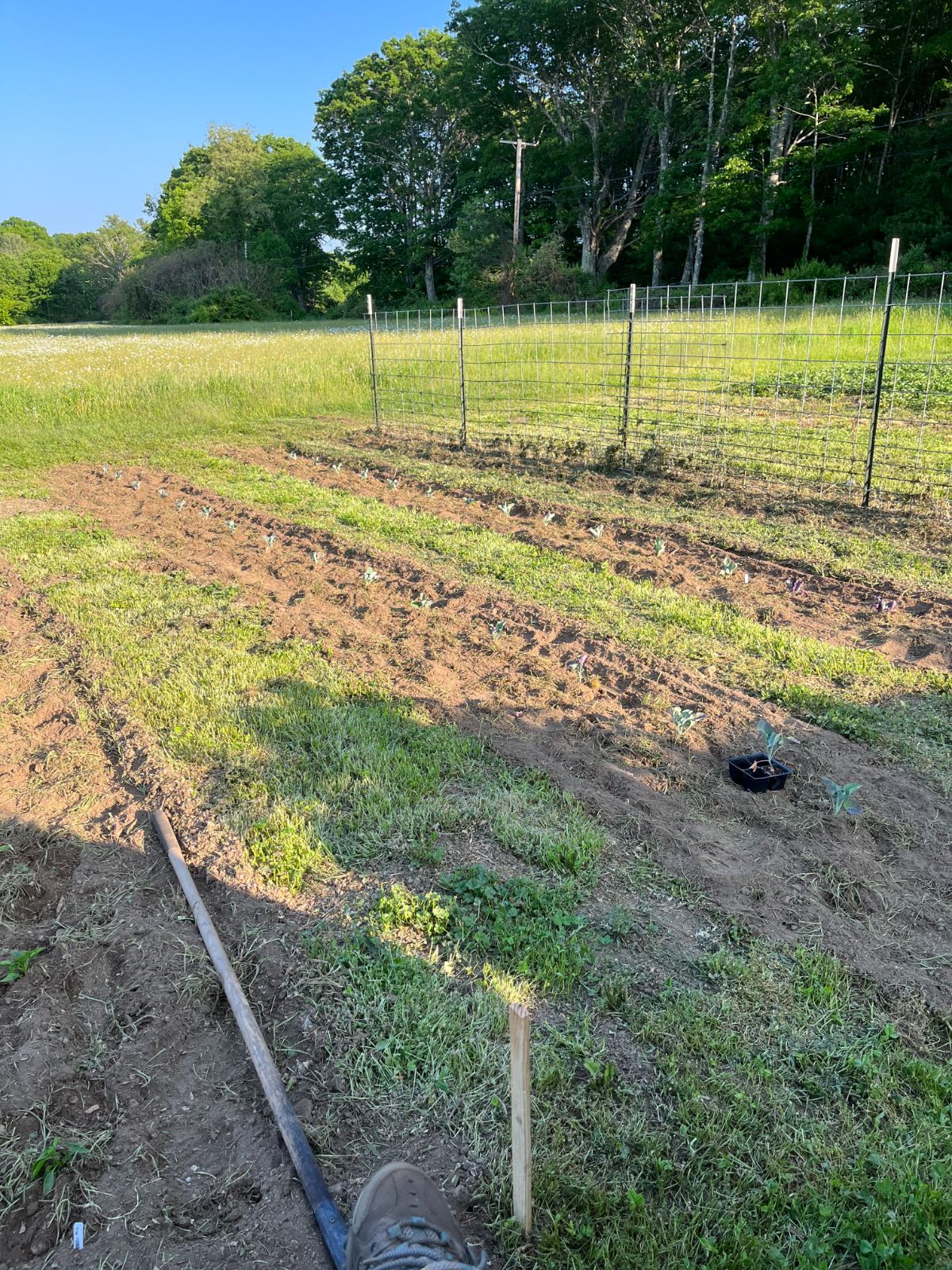
Plant a cover crop at the end of the season to keep weeds from taking hold in the late fall or early spring before the gardening season starts. Just as with crowding weeds out with plants, weeds can’t grow if there is an existing cover crop in their way. Plus, cover crops help maintain soil moisture, act as erosion control, and make excellent “green manure” (fertilizer). An ounce of prevention is worth a pound of cure!
15. Get rid of pulled weeds.
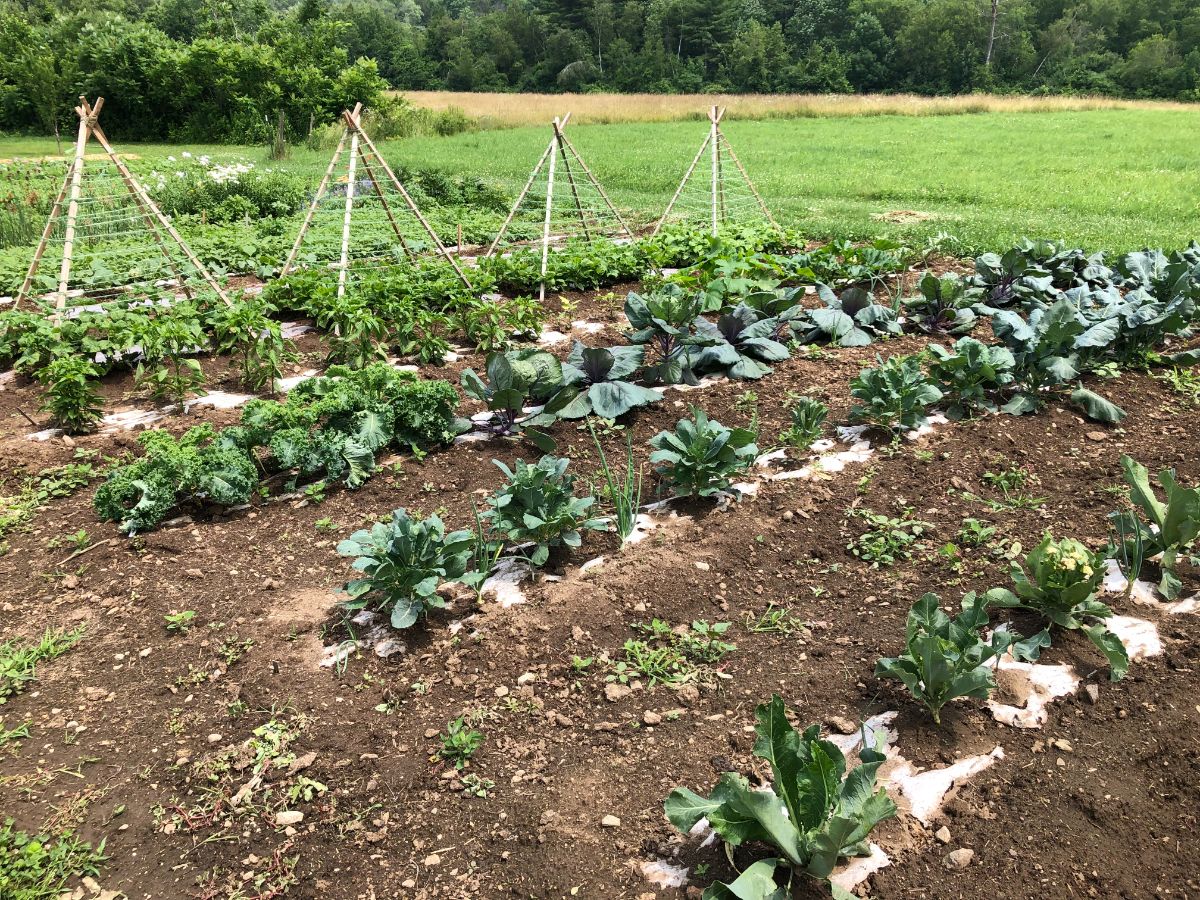
When you pull weeds, get rid of them! If you don’t, there’s a good chance many of them will re-root. Some weeds are tenacious, and all it takes for them to reroot is a little contact with soil or being buried by the top layer of pulled weeds. When this happens, the weed plants tend to grow in crooked, odd ways, often hidden in a tangle of other dead and dying weeds, and they can be harder than ever to pull or remove.
Pulled weeds are also a source of disease and a good place for pests and bugs to hide. Yes, decayed weeds can be good for the soil, but it’s best to remove the weeds completely and compost them in a compost pile rather than leave them in the garden aisles where they can regrow and create bigger problems.
16. Maintain mowable living aisles.
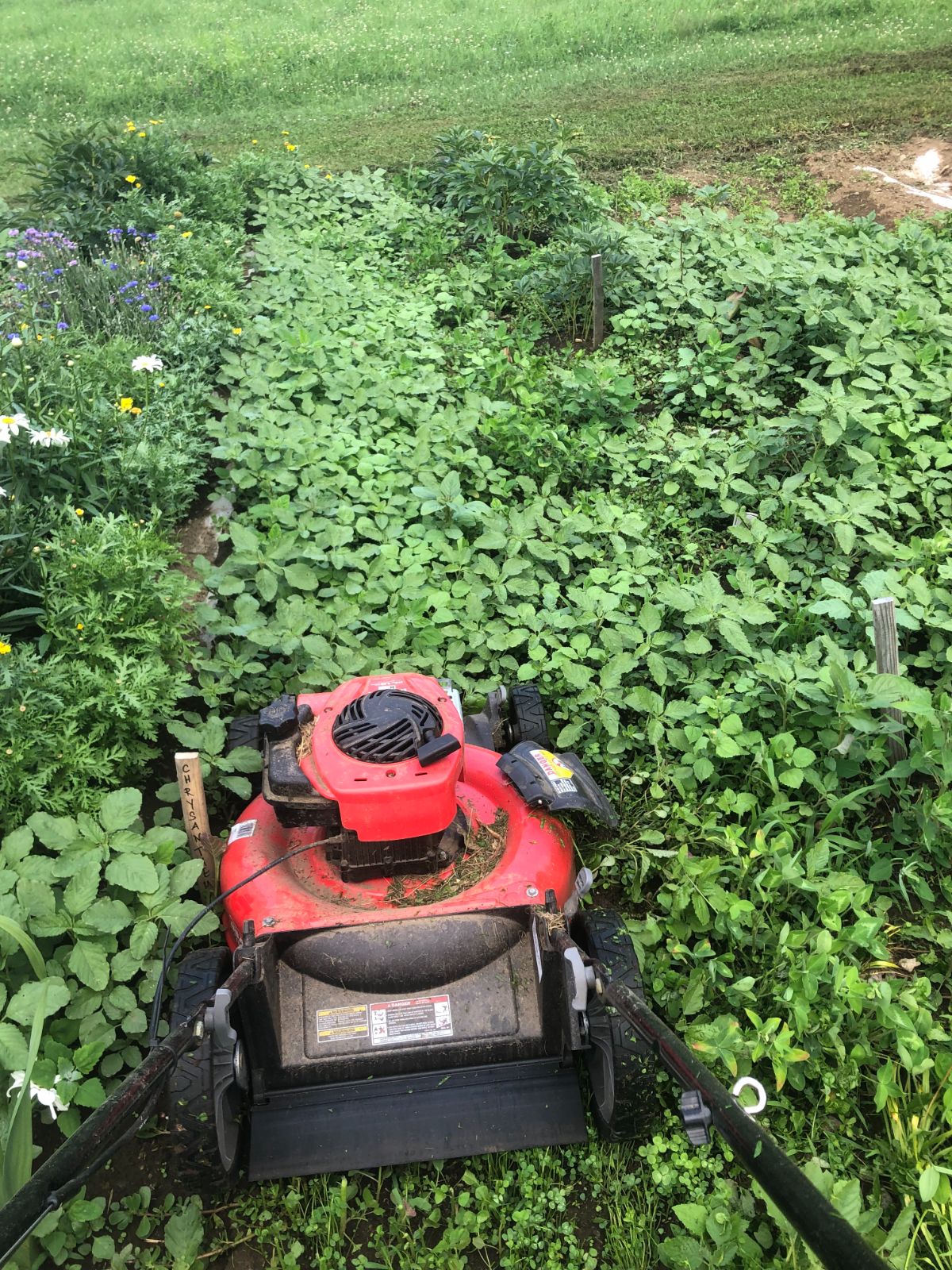
Aisles and walkways have the most amount of exposed space and are often the place where the most weeds grow. Since every plant in an aisle is one you don’t want there (and one you don’t want spreading seed), every single one of them is a weed, and it’ll need to go.
That is, unless you plant your aisles with intention, with something that won’t harm your vegetables and desirable plants, with something that you can maintain quickly and easily by mowing. A good example of this is clover. Clover is a nitrogen-fixing legume that can do a lot of good in your garden. It is not grass, but it can be mowed without dying, and it is great for crowding out weeds. Incidentally, many if not most of the weeds that do crop up in the clover cannot handle the constant mowing, and they will die off.
Clover is also a top choice for a cover crop, so you can work this into your garden plan. For example, plant the clover as a cover crop in the fall, and then in the spring, only till (or no-till plant ) the rows where you will be planting, leaving the clover in between as a mowable, maintainable walkway for the growing season.
Do note that with this method, the clover can creep into growing rows. For some larger plants, after they are established, this may or may not be a problem, but for the most part, you will want to either use a layering mulch, barrier, or paper in the plant aisles or hoe regularly to keep the soil area clear and stop the clover from becoming its own sort of weed.
17. Use weed killers with care.
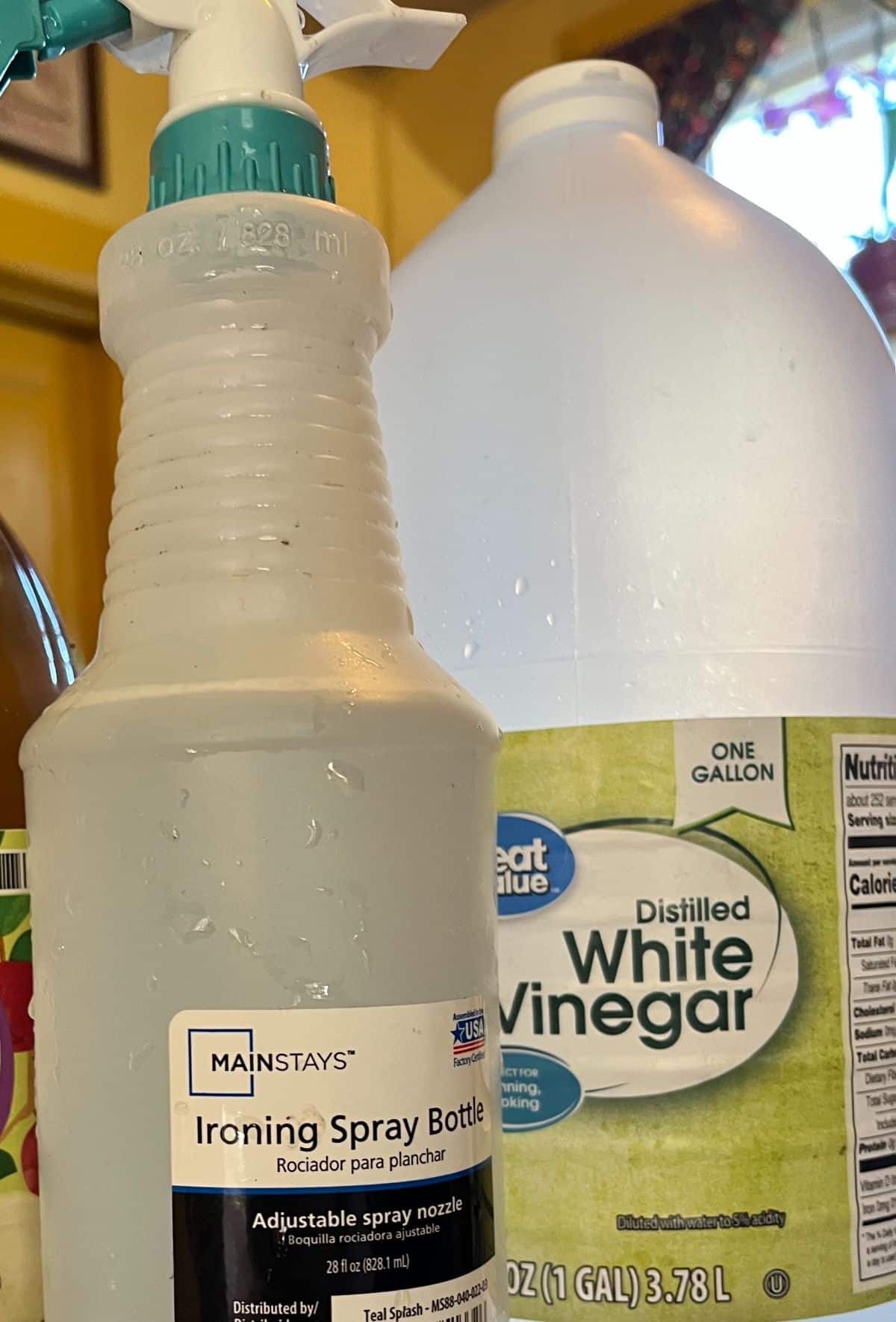
Weed killers are, of course, an option for controlling weeds in the garden, but they come with their own set of precautions and potential problems. The first problem, of course, is the issue of introducing a synthetic (non-organic) chemical into your food garden. If you choose to use one, you need to be well aware of the residual effects and holding times before it is safe to consume your produce. Read, know, and follow label instructions carefully.
For safety and the environment’s sake, we recommend using a more natural, DIY-type vinegar weed killer. Horticultural strength vinegar is the strongest and will work the most effectively, but it is strong enough to cause eye and lung irritation and potentially burns, so this, too, must be used with care.
Just like synthetic weed killers, organic weed killers are indiscriminate and will kill your good plants as easily as they kill bad plants if the killer is oversprayed, poorly aimed, or drifts on the wind. You should only use weed killers on calm, windless days and away from valued plants. If you must spray even an organic weed killer near desirable plants, protect them by covering with a tarp or make a “collar” or cover with a section of PVC pipe or an overturned five-gallon bucket.
Weeding – A Part of Garden Life
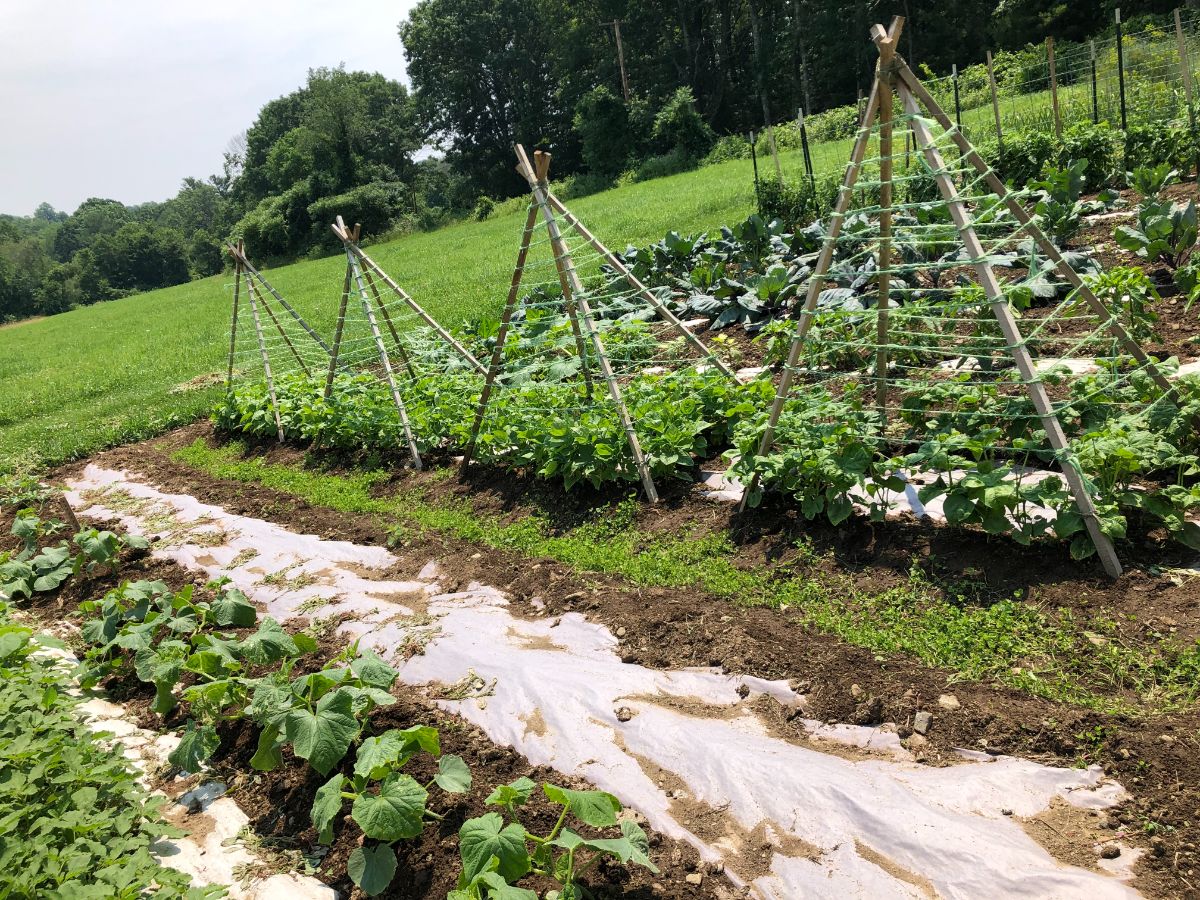
Weeding is just a part of garden life. It can even be enjoyable and peaceful. Plug into some good music or an ebook, get some exercise, and enjoy the fresh air and having your hands in the soil. But do the things that make your weeding life easier, too. And at the end of the day—take a good look and enjoy the feeling of accomplishment, a job well done, and a happy, healthy garden!

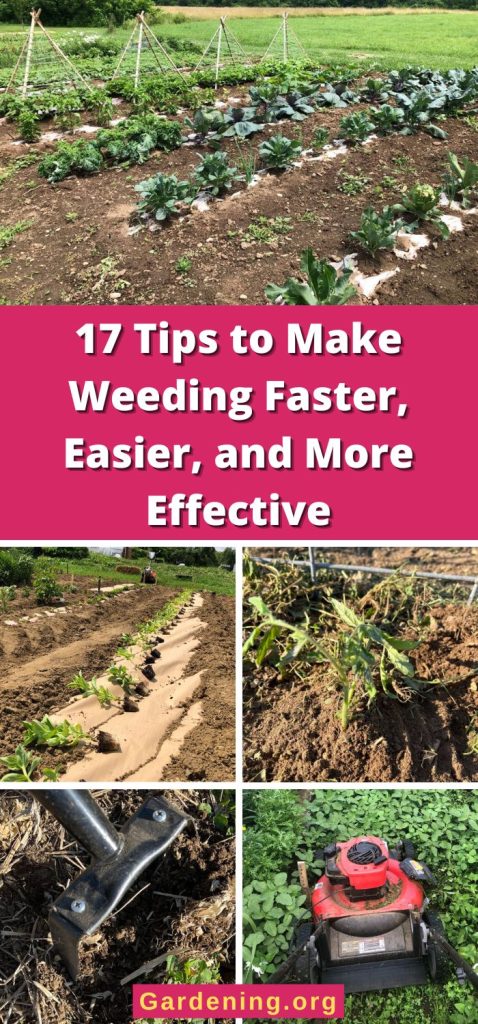
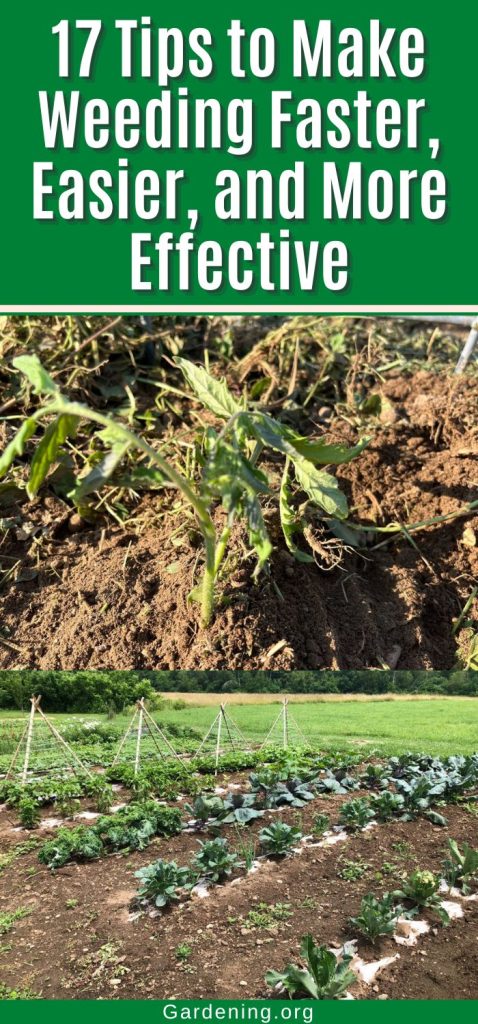
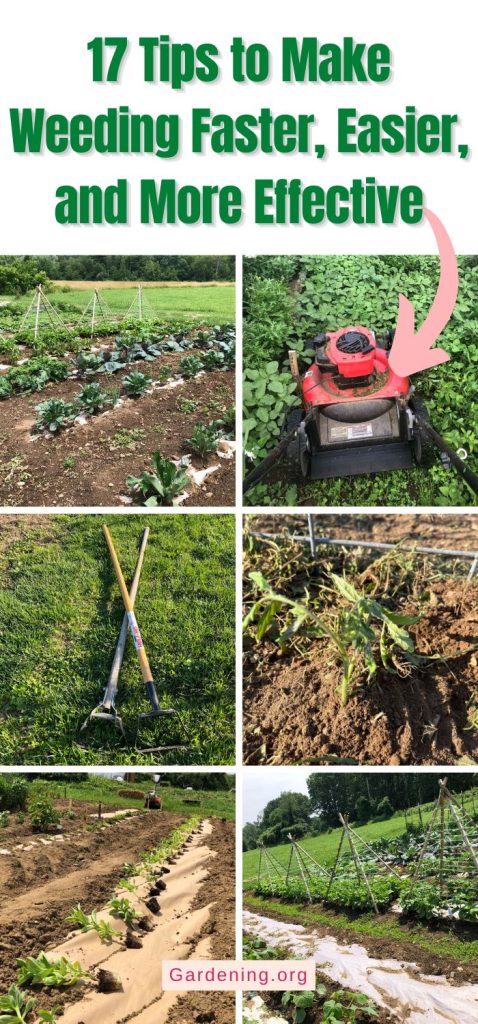


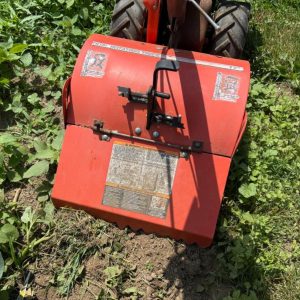
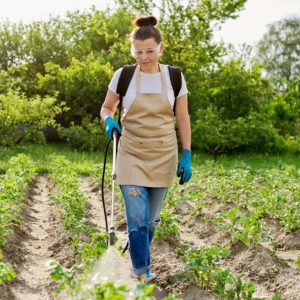

Leave a Reply